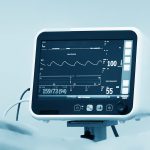In today’s fast-paced clinical research environment, Real-World Evidence (RWE) is no longer just a buzzword – it’s reshaping how we understand treatments, diseases, and patient outcomes. Traditionally, clinical trials were the gold standard for gathering medical evidence. However, they often operated under highly controlled settings, sometimes missing out on the everyday complexities real patients face.
So, what exactly is RWE? In simple terms, it refers to healthcare information derived from real-world settings rather than controlled environments. Unlike randomized controlled trials (RCTs) that focus on specific patient groups under strict conditions, RWE pulls data from routine healthcare interactions. This could mean everything from doctor visits to wearable device readings.
By focusing on what happens outside of clinical trials, RWE paints a fuller, more authentic picture of how treatments work in diverse populations. As healthcare becomes more patient-centered, regulators, researchers, and pharmaceutical companies are increasingly looking toward RWE to guide decisions.
Sources of Real-World Evidence
Real-World Evidence can come from a variety of sources, each offering unique insights. Understanding where this data originates is crucial for appreciating its value – and its limitations.
- Electronic Health Records (EHRs): These are goldmines of patient information. EHRs provide data on diagnoses, treatments, outcomes, and even side effects recorded during everyday medical visits.
- Insurance Claims and Billing Data: Although primarily designed for administrative purposes, these datasets can reveal patterns in healthcare utilization, treatment adherence, and long-term outcomes.
- Patient Registries: Organized databases focusing on specific diseases, conditions, or populations, patient registries help track treatment patterns, disease progression, and response rates over time.
- Wearable Devices and Digital Health Apps: With the rise of smartwatches, fitness trackers, and health apps, patient-generated health data is more accessible than ever. Metrics like heart rate, activity levels, and glucose readings offer continuous streams of real-world information.
Together, these sources give clinical researchers a panoramic view of patient experiences, uncovering trends that would otherwise be hidden in conventional studies.
The Growing Role of RWE in Clinical Trials
RWE isn’t just about collecting data – it’s changing the very blueprint of clinical research.
1. Enhancing Trial Design and Patient Recruitment:
With RWE, researchers can design smarter trials. By analyzing existing data, they can identify patient populations who are more likely to benefit from a therapy, thus fine-tuning inclusion and exclusion criteria. This approach can shorten recruitment times and boost trial success rates.
2. Supporting Endpoint Validation and Monitoring:
In traditional trials, endpoints like “survival rates” or “disease progression” can take years to measure. RWE offers a way to validate surrogate endpoints – such as biomarkers – that predict clinical outcomes earlier, speeding up the entire process.
Additionally, RWE enables continuous monitoring post-trial, offering insights into long-term efficacy and safety in broader populations. This ongoing observation is vital in today’s era of post-market surveillance and pharmacovigilance.
Overall, by integrating RWE into clinical trial design and execution, companies can reduce costs, shorten timelines, and develop therapies that better meet patient needs.
RWE’s Influence on Regulatory Decision-Making
Regulators like the FDA (U.S. Food and Drug Administration) and EMA (European Medicines Agency) are increasingly embracing RWE as part of their evaluation frameworks.
1. FDA’s Framework for RWE:
In December 2018, the FDA released its “Framework for Real-World Evidence Program,” outlining how RWE could support approvals for new indications or satisfy post-approval study requirements. Since then, the FDA has accepted RWE data for various drug approvals, particularly in rare disease contexts where traditional trials are impractical.
2. EMA’s Approach to RWE:
The EMA, too, has recognized RWE’s value, especially through initiatives like the DARWIN EU project, which aims to create a sustainable platform for RWE studies across Europe.
Recent Case Studies:
- Pfizer’s Ibrance (palbociclib) was granted an expanded label partially based on real-world data.
- Amgen’s Blincyto (blinatumomab) utilized RWE to support post-marketing commitments.
These examples highlight how RWE is no longer supplementary but increasingly central to regulatory strategy. Regulators demand robust, high-quality real-world data, meaning pharma companies must invest in better data curation, analytics, and transparency.
Benefits of Incorporating RWE in Clinical Research
Leveraging Real-World Evidence brings undeniable advantages for researchers, pharmaceutical companies, and ultimately, for patients.
1. Faster Time to Market:
Traditional clinical trials are long, expensive, and sometimes impractical for rare diseases or small populations. Using RWE allows for faster evaluation of treatment effectiveness and safety, helping companies expedite regulatory submissions and get therapies to patients sooner.
2. Improved Patient-Centric Designs:
RWE provides insights into patient behaviors, treatment preferences, and real-world adherence. This allows researchers to design studies that reflect what matters most to patients – not just clinical endpoints, but also quality of life and treatment convenience.
3. Greater Diversity and Real-World Applicability:
Randomized clinical trials often have rigid inclusion criteria, limiting the diversity of participants. RWE captures the experiences of a broader range of patients, including those with multiple comorbidities, from various demographic backgrounds, or living in different healthcare environments.
4. Cost-Effectiveness:
Collecting and analyzing existing real-world data is often more cost-effective than launching new large-scale trials, particularly for post-marketing surveillance and label expansions.
5. Strengthening Post-Market Surveillance:
Once a drug is approved, RWE can continuously monitor its safety and efficacy across large populations, helping identify rare side effects or long-term outcomes that were not evident during clinical trials.
In short, RWE fills the critical gaps left by traditional trials, ensuring therapies are not just scientifically effective but also practical and beneficial in real-world scenarios.
Challenges and Limitations of RWE
While the potential of Real-World Evidence is immense, it’s not without significant challenges.
1. Data Quality and Standardization:
Unlike clinical trial data, real-world data is often collected for reasons other than research. It can be messy, incomplete, or inconsistent across different sources. Establishing uniform standards for data collection and reporting remains a big hurdle.
2. Privacy and Ethical Concerns:
As healthcare data becomes more integrated and accessible, safeguarding patient privacy is paramount. Compliance with regulations like HIPAA (Health Insurance Portability and Accountability Act) and GDPR (General Data Protection Regulation) is crucial to avoid ethical breaches.
3. Analytical Complexities:
Analyzing real-world data is far more complex than analyzing clinical trial data. Observational datasets are prone to biases, confounding variables, and missing information, all of which can skew results if not handled correctly.
4. Acceptance by Regulators:
While regulators are warming up to RWE, they still demand rigorous validation. Researchers must demonstrate that their data sources are reliable and that their methodologies are scientifically sound.
5. Technological Barriers:
Integration of different data systems (EHRs, wearables, claims) often presents interoperability challenges, slowing down effective RWE utilization.
Despite these challenges, with proper planning, technology, and governance frameworks, the hurdles associated with RWE can be mitigated.
Best Practices for Leveraging RWE Effectively
To unlock the full potential of RWE in clinical research, organizations must follow best practices:
1. Ensure Robust Study Design:
Before diving into data collection, outline clear objectives, define your study population carefully, and choose suitable endpoints. Emulating the rigor of traditional clinical trials in RWE studies is key to generating credible evidence.
2. Validate Data Sources:
Prioritize data sources that are reliable, comprehensive, and relevant to your study questions. Conduct regular audits and validation checks to ensure data integrity.
3. Maintain Transparency and Documentation:
Detailed documentation of study methods, data handling processes, and statistical analyses not only ensures scientific credibility but also strengthens regulatory submissions.
4. Collaborate with Technology Providers:
Partner with digital health companies, EHR platforms, and analytics firms to enhance data capture, interoperability, and analysis. Technologies like natural language processing (NLP) and machine learning (ML) can greatly aid in making sense of complex datasets.
5. Engage Regulators Early:
Consult with regulatory authorities at the planning stage to ensure your RWE approach aligns with their expectations and guidance.
Adopting these practices can help clinical researchers build a solid foundation for successful RWE-based research and approvals.
Future of Real-World Evidence in Clinical Research
The future of clinical research is undeniably intertwined with RWE – and it’s evolving faster than ever.
1. AI and Machine Learning Integration:
Artificial intelligence will play a crucial role in analyzing vast, unstructured datasets to identify hidden patterns and predict clinical outcomes, thus enriching the value of RWE.
2. Personalized Medicine Advancements:
RWE will increasingly support personalized medicine by providing granular insights into how different patient subgroups respond to therapies, enabling tailored treatment plans.
3. Global Harmonization of RWE Standards:
Organizations like the International Council for Harmonisation (ICH) are working toward standardizing the generation and use of RWE worldwide, facilitating global regulatory acceptance.
4. Expansion into New Therapeutic Areas:
While oncology and rare diseases have been early adopters of RWE, its applications are expanding into chronic diseases like diabetes, cardiovascular diseases, and mental health.
5. Greater Patient Involvement:
Future RWE efforts will likely involve patients not just as data sources but as active partners in study design, outcome prioritization, and data interpretation.
The rise of RWE marks a paradigm shift – clinical research will no longer be confined to laboratories but will extend into the everyday lives of patients, creating a more holistic understanding of healthcare.
Conclusion
Real-World Evidence is ushering in a new era of clinical research that is more patient-centered, efficient, and responsive to actual healthcare needs. By complementing traditional clinical trial methods, RWE bridges the gap between controlled study environments and the real-world complexities of patient care. As technology advances and regulatory frameworks continue to evolve, the integration of RWE into clinical research and regulatory decision-making will only deepen, offering tremendous potential to accelerate innovation and improve patient outcomes globally.
If you’re in the pharma industry and not yet tapping into the power of RWE – you risk being left behind. Now is the time to invest, innovate, and transform the future of clinical research.


